What You Need To Know About Screws
2nd Jun 2022

Selecting the right screw for a particular job can be a meticulous process. You often are required to consider several different things, which include the material of the screw as well as its design. This article will help you choose the right screw for your application.
Selection of Screws
To select the right screw for applications, the following three considerations are taken into account:
1. What is the Head Type of the Screw?
The head is the uppermost part of any fastener. There are different types of heads for varying uses and applications. Some of the popular ones include:
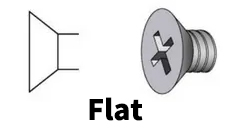
- Flat Head: Flatheads are mainly countersunk. These screws are designed to sit low on the surface that they are drilled into.
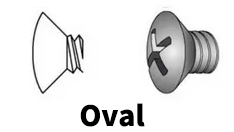
- Oval Head: Oval heads offer a combination of flat and pan head types. The head is slightly rounded and has a countersunk underside.
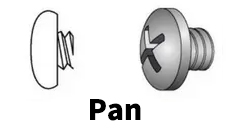
- Pan Head: Pan's heads are a bit rounded with short vertical sides that provide a relatively low profile once they are driven into a surface.
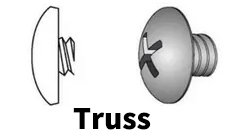
- Truss Head: Truss heads have a rounded top with a large, flat underside, which offers an ultra-low profile, and remain above the surface line.
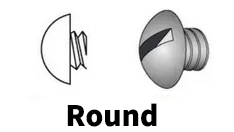
- Round Head: Round heads are tall domed heads. Although this design is becoming less common, round heads offer another alternative for creating a rounded appearance.
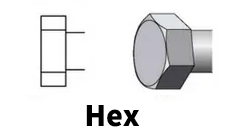
- Hex Head: Designed to allow for greater torque, hex heads typically require a hex wrench or socket to install the screw or bolt. Apply force against the screw head’s outside to drive this head shape.
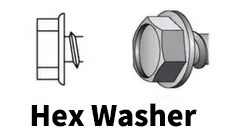
- Hex Washer Head: The Hex Washer Head has a flat washer that extends beyond the sides, providing it with a greater bearing surface than a normal hex head fastener. The washer and the Hex Head are bonded together as one piece; this offers greater protection to the mating surface than a standard hex head. The increased bearing area decreases the likeliness of crushing mating surfaces.
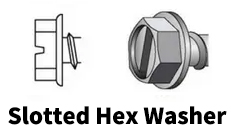
- Slotted Hex Washer Head: The slotted hex washer head is a hex head with a slot in the center, which is designed to provide additional driver connection for easy assembly, especially for limited access applications. The Hex Washer Head has a flat washer that extends beyond the sides, providing it with a greater bearing surface than a normal hex head fastener. The increased bearing area decreases the likeliness of crushing mating surfaces.
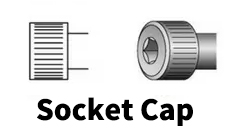
- Socket Cap Head: Socket Cap Head or simply called ‘socket cap screws’ are used in machine parts and are especially common for removable panels and parts. round cylindrical head and tightened with an Allen key (socket wrench) drive. Socket caps are the general term for Socket Head Cap screws, but loosely also refer to Button Head, and Flat Head screws as well. Button Heads have a round head profile and are less likely to be hit or snagged, while Flat Heads are fully countersunk.
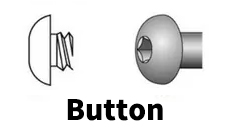
- Button Head: Button heads feature a medium dome, with a wider bearing surface than standard heads, and they offer a finished appearance, making them an ideal choice when a neat appearance is desired. Designed for light fastening applications, button head cap screws lack the strength of standard socket screws.
2. What is the Thread Type of the Screw?
A screw thread, often shortened to thread, is a helical structure used to convert between rotational and linear movement or force. A screw thread is a ridge wrapped around a cylinder or cone in the form of a helix, with the former being called a straight thread and the latter called a tapered thread.
Generally, there are two thread series, namely The ISO Metric Screw Thread (in millimeters) and The Unified Screw Thread (in inches).
There are three standard thread series in the Unified screw thread system that is highly important for fasteners: UNC (coarse), UNF (fine), and 8-UN (8 thread).
The Unified Thread Series is classified into coarse threads, fine threads and extra fine threads much like Metric screw threads are.
- UNC (coarse): The Unified National Coarse (UNC) is a defined standard set of thread forms, sizes, and other variables commonly used in the United States and Canada. Coarse threads are deeper than fine threads, with fewer threads per inch on the tool.
- UNF (fine): Unified Fine Thread (UNF) taps have more threads per inch than Unified Coarse Thread (UNC) taps, but the threads are not as deep.
- 8-UN (8 thread): The 8-thread series is characterized by 8 threads per inch regardless of diameter and is generally used on diameters 1” and larger. It is primarily used with bolt specifications A193 and A320, where the bolt will be used in high-pressure and/or high-temperature joint applications. However, the 8-thread series is also used when an engineer is looking for a compromise between coarse and fine thread series. 8UN threads are more resistant to vibration loosening than UNC threads.
- The ISO Metric Screw Thread:
The ISO metric screw thread system is the most widely used thread series. It is quite simple to identify and comprehend thread sizes that use the ISO metric thread designation.
The sizes start with an “M” denoting that it is measured using metric thread designation. The “M” is followed by the first number, which is the major diameter of the external thread in millimeters. The second number corresponds to the pitch, which is the distance between adjacent threads. Finally, the third number represents the thread length.
So, a screw with the size M10x2.0 x 16 will have a major external thread diameter of 10 millimeters, with threads per 2 millimeters and a thread length of 16 millimeters.
If the pitch is not specified in metric size, then the fastener is automatically considered to be of coarse thread series. In all other cases, the size of the pitch needs to be mentioned.
3. What is the Drive Type of the Screw?
The drive types of a screw help determine the type of screwdriver needed to fasten or unfasten them. Here are the different types of drives:
- Star Drives: Star drives have a star shape recess with six rounded points.
- Phillips Drives: Phillips drives have a cruciform shape and are specifically designed to work with Phillips screwdrivers.
- Hex Socket Drives: These drives feature a hexagonal recess, and are driven with the help of a hex screwdriver or a hex key.
- Pozi Drives: These screw drives are a development of the Phillips drive. These drives feature two cruciform slots. The second slot is less distinct than the standard cross drive.
- Slotted Drives: Slotted drives are traditional, yet popular types of drives, which employ a simple, single-slot for a flat-tip screwdriver.
- There are different types of screws available in the market. Some of the popular ones include round head slotted screws, precision shoulder screws, steel machine screws, and knurled thumb screws. All the points mentioned above will help you in selecting the right type of screw for your applications.